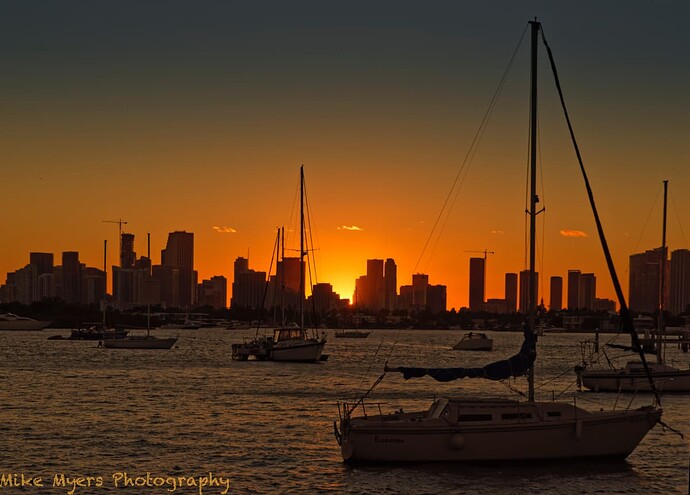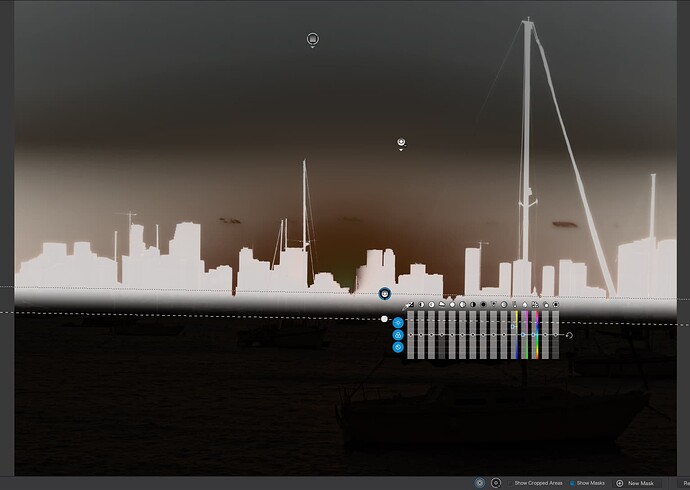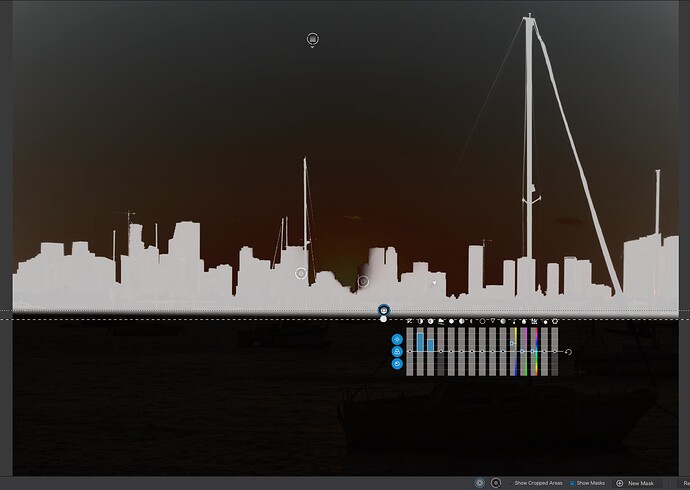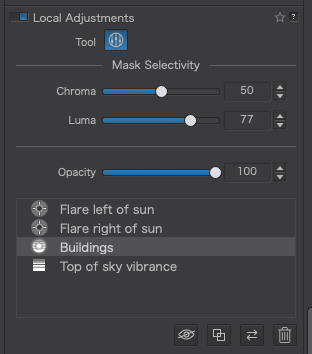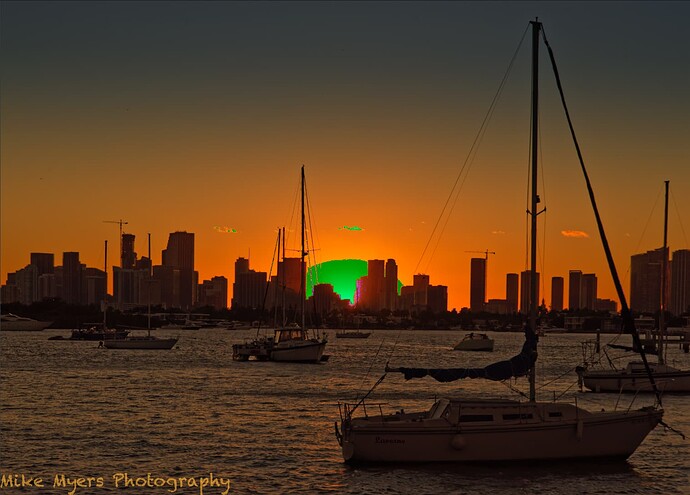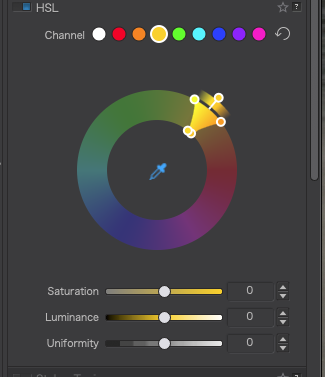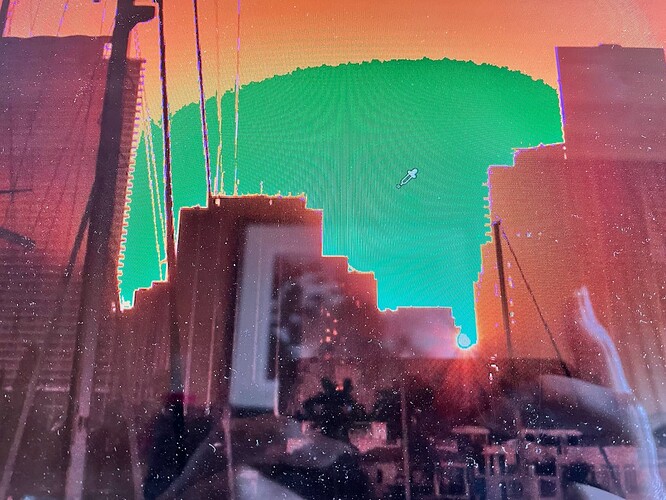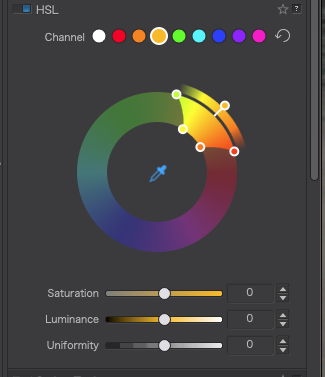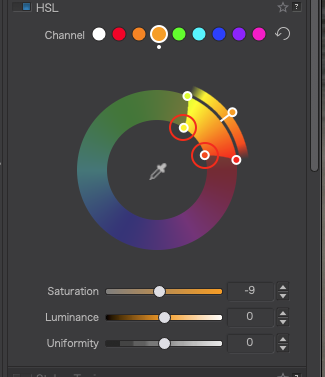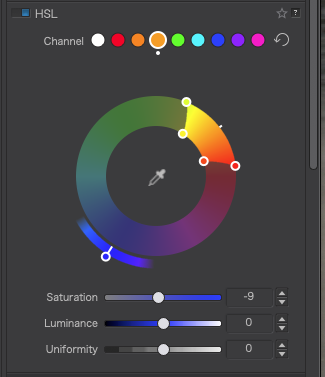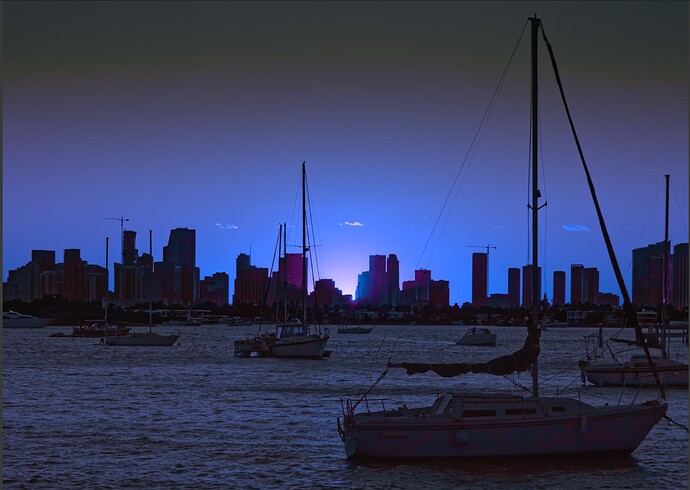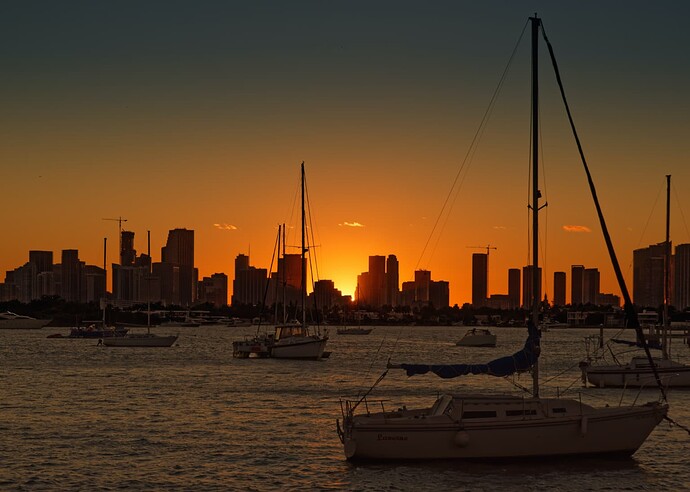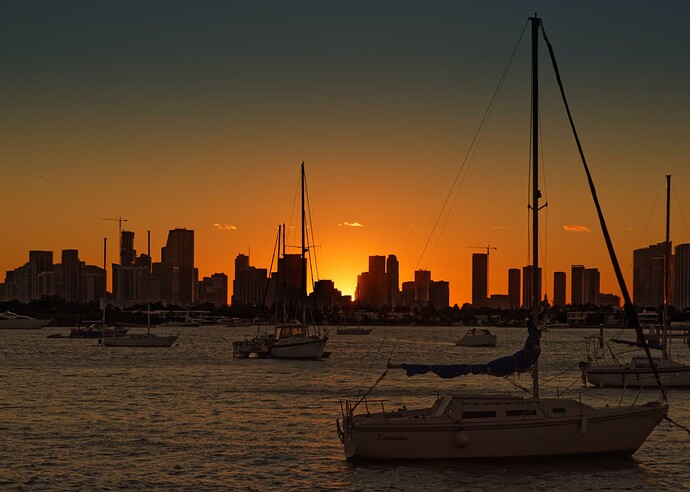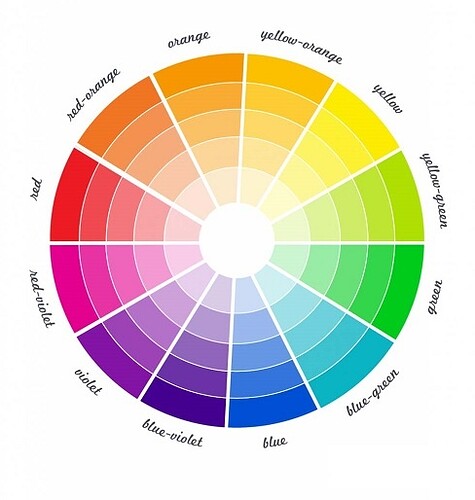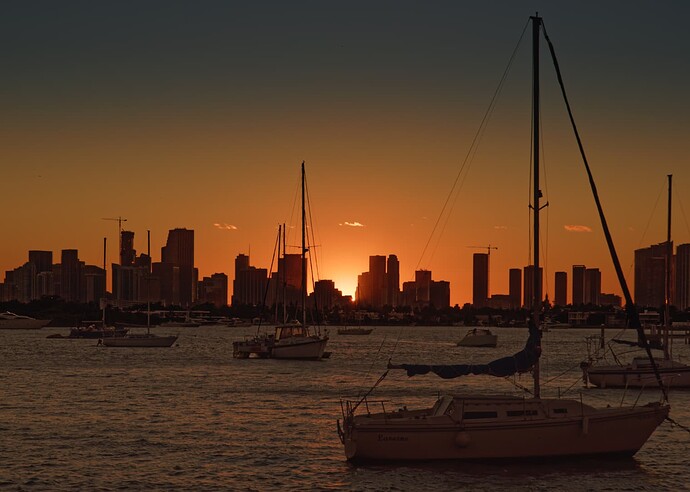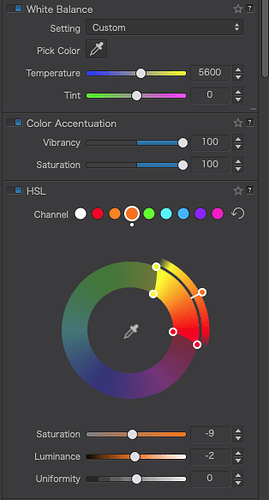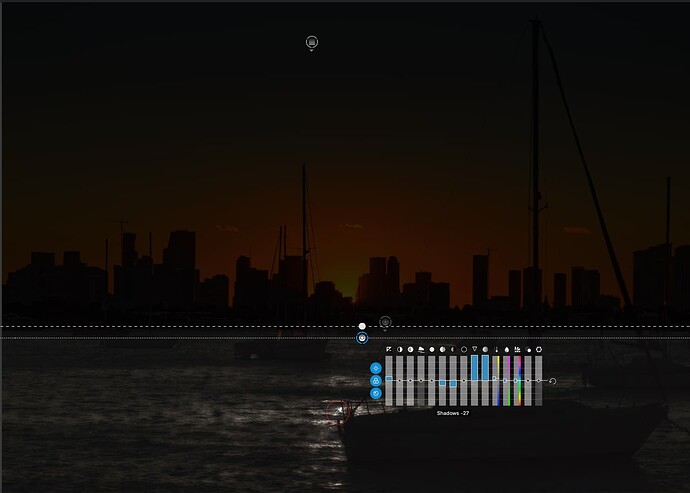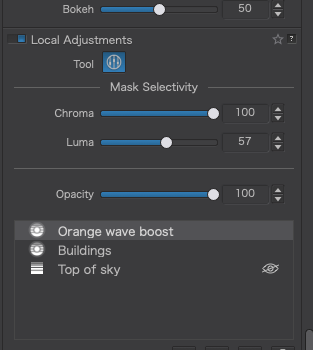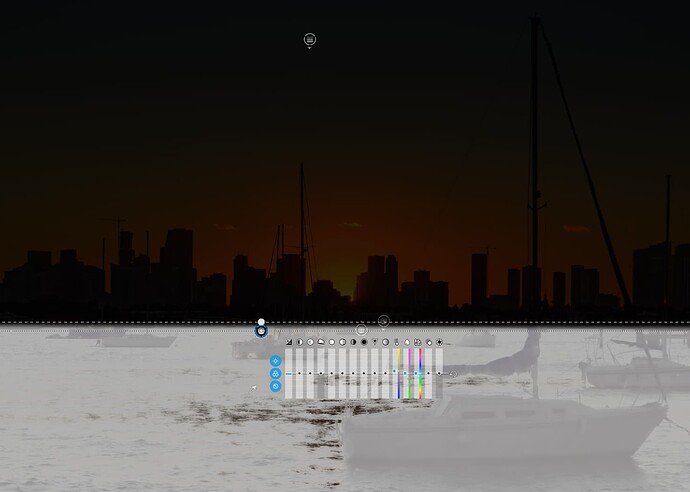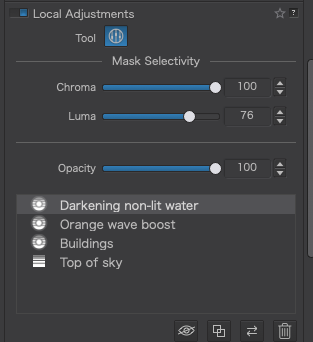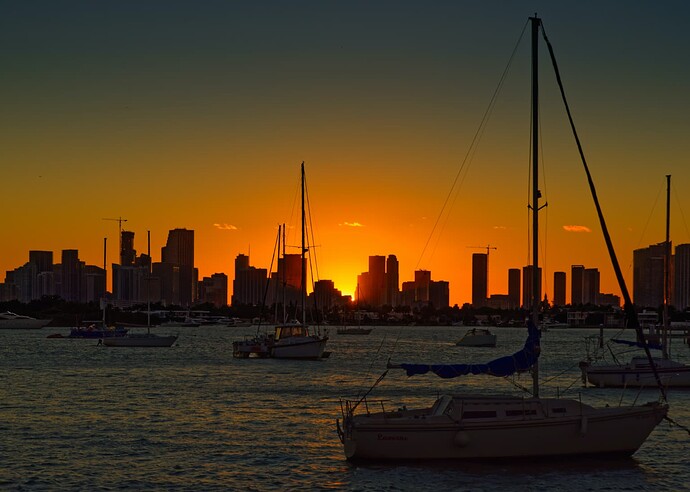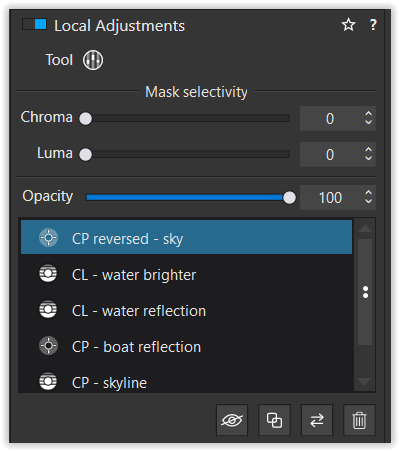Control line to brighten up the buildings.
I can start the line just above the shore line, and drag down just a little, so now I have two lines.
I place the pipette on a dark building.
With the mask on, the buildings are white and everything else is dark, so I can change the brightness, or color, or sharpness of all buildings at once.
Question - why did you pick that spot just above the shoreline for the start of the Control Line, and you made the second line appear just a little below the top line. I understand why you placed the pipette as you did, but why did you pick the “start” and “end” of the control line, resulting in both lines just a little apart, appearing under the buildings as you showed?
Once you’ve done that, I understand you can brighten or darken all the buildings at once.
Suppose I wanted to whiten the hull of the sailboat near the bottom. If I’m right, this can not be done wit a Control Line, only Control Points.
Someplace Wolfgang mentioned a “radial control line”, actually “radial filter” if I remember correctly. His post up above, which I guess is now VC3, looks like it “should” be the most accurate, as it wraps around the sun, but in reality it should be an oval shape, which how the sky looks near the sun (as opposed to round).
I was thinking a long exposure might make the water more interesting, but the boats and masts would all be blurry, so that’s out.
Finally, as I stare at your image (VC2) up above, shown in front of a white background, all the work you went to to bring out the detail in the buildings, and boats, is sort of wasted, as what most people will see is a silhouette. As an exhibition print, what you’ve done is marvelous, but I think it suffers when I sent my images to people using email. The only fix I can think of is a big, wide, dark gray picture frame around the images.
Thanks for spending all the time that you did posting your changes step by step - it eventually mostly started making sense to me. Thanks also for the explanation of the HSL color wheel. It is slowly starting to make sense to me as well.

